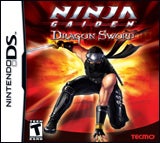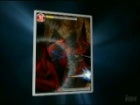GameSpy: Can you tell us what your goals were when designing Ninja Gaiden: Dragon Sword?
Tomonobu Itagaki: First of all, videogames and computer games in the past have been played using controls like the keyboard and mouse. Of course, I'm good at making games in the traditional fashion as well, but when I look at the DS, it's got a very unique interface where you're able to interact directly with objects on the screen. To make a slightly exaggerated analogy, it would be like if traditional game control methods were like MS-DOS, then the DS would be like a GUI-based operating system like Windows or Mac OS. I felt that there was that big of a paradigm shift when working on this hardware.
So basically the difference is whether your interface is procedure-oriented or object-oriented. When I first saw what the DS hardware was capable of, I thought if we made an object-oriented game, it would enable people to interact more directly with what's happening on the screen, and make a game that's more intuitive in that someone without prior knowledge of how controllers or keyboards and things like that work would still be able to interact directly, and be able to control that game.
I know that some fans have said that if you're going to do a portable version of a fast-paced action game like Ninja Gaiden, why not make it for the PSP, which is ostensibly more powerful hardware. But, you see, the thing about the PSP is it's still essentially the same type of design as a console. It's still procedure-oriented. If I was going to make a game for that, I might as well make another one for the 360, or something like that, because it's not essentially changing the paradigm that you push a button and something happens, you move a stick and something happens. What I really wanted to do was take advantage of the unique design that the DS hardware offers.
GameSpy: The DS, as you mentioned, isn't the most powerful system compared to the PSP. Do you enjoy the challenge of pushing a system's limits?
Tomonobu Itagaki: It is challenging, but I was a graphics programmer back in the Super Nintendo days, so there are certain elements of this that I find almost nostalgic. Plus, obviously it's more powerful hardware than the Super NES. I mean, they do have 3D capabilities, so it's been interesting going in and seeing what kind of techniques, both new and old, we can use to make the most of the hardware.GameSpy: Do you feel, from a gameplay standpoint, that there are certain advantages to stylus-driven control versus buttons and direction pads?
We had a programmer on our team who had only worked on Xbox in the past, and I put him on the DS team specifically because I wanted to show him that working on hardware that has certain limitations can really help you hone your skills in writing optimized programming. He took that challenge in stride and was really enjoying working on the project.
Tomonobu Itagaki: Yeah, I mean certainly the speed at which a player is able to transmit his thoughts and will to the game is much faster this way. If you wanted to play a game like this with a setup that was procedurally-oriented, using something like a wired controller, it wouldn't work. If you were trying to, say, throw shurikens at three targets in the background while at the same time slashing the guy next to you, and then hitting him up and attacking him in the air... if you wanted to do all that once on an existing console with a standard control scheme, you just wouldn't be able to.
So as a result, I think it's interesting to note that the gameplay in Ninja Gaiden: Dragon Sword is much more speedy and much more direct than any Ninja Gaiden game in the past.





